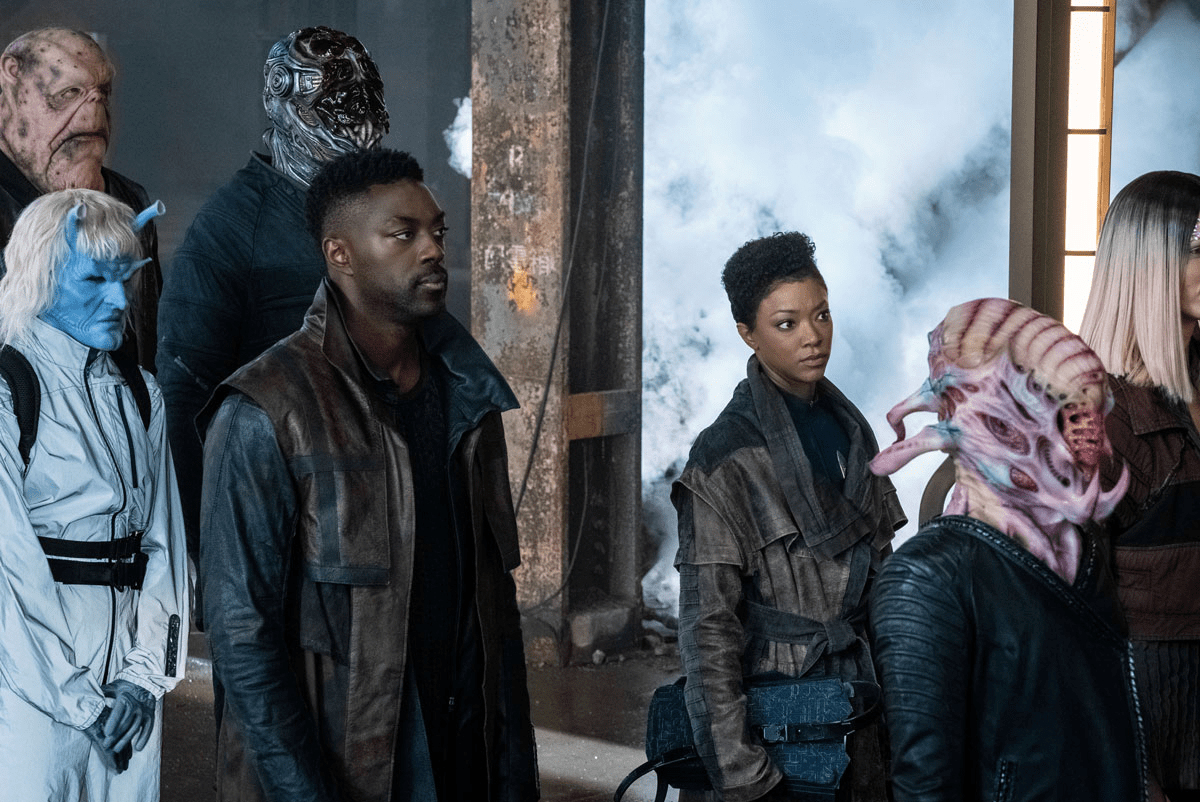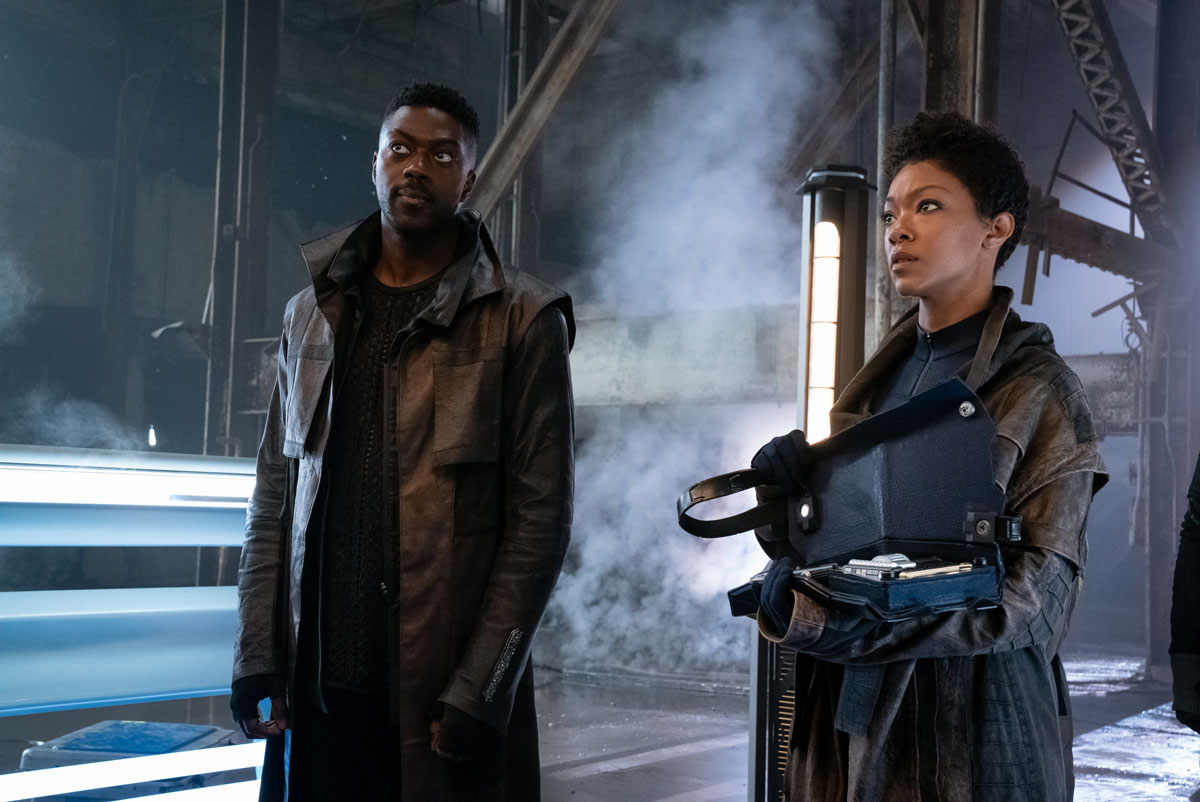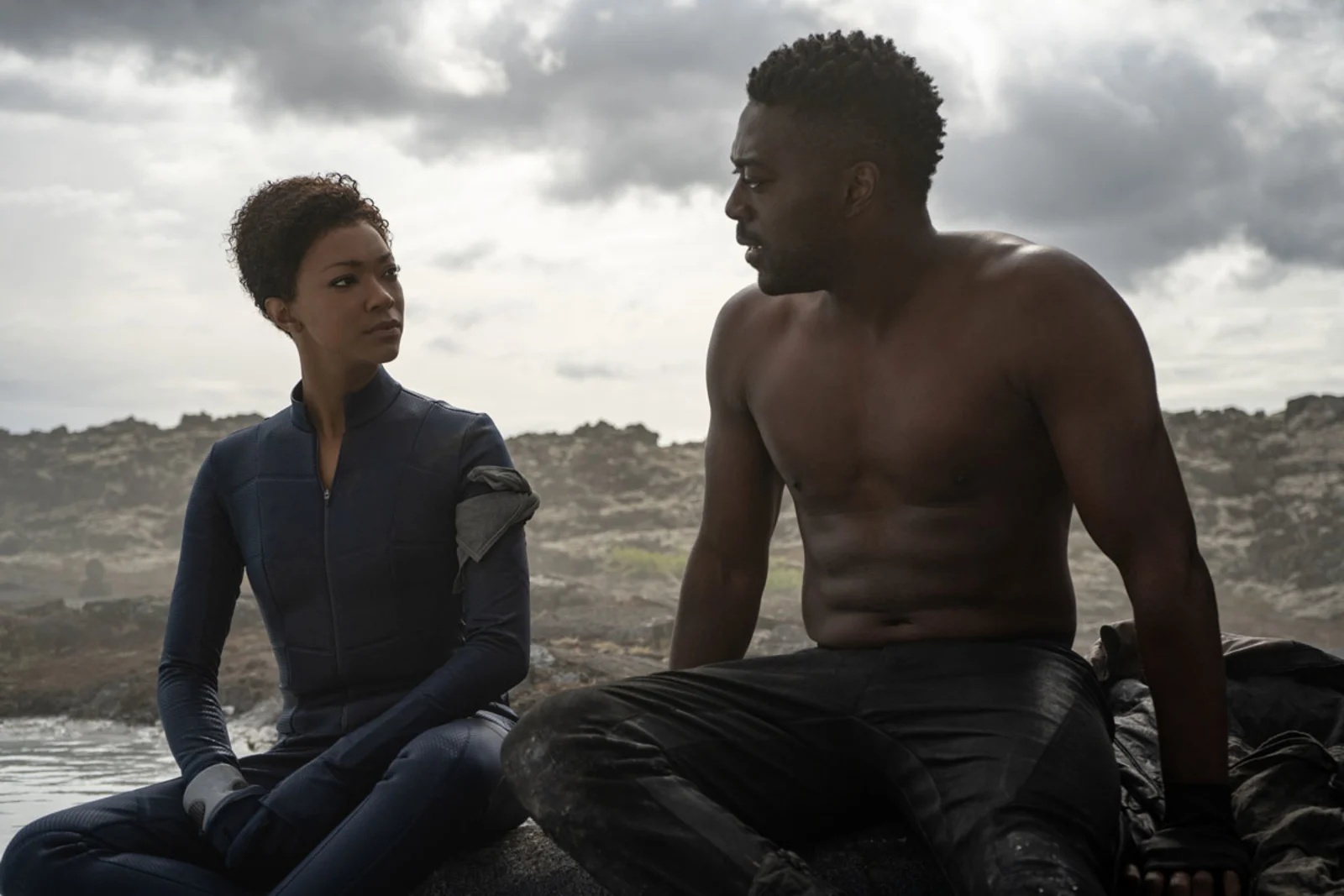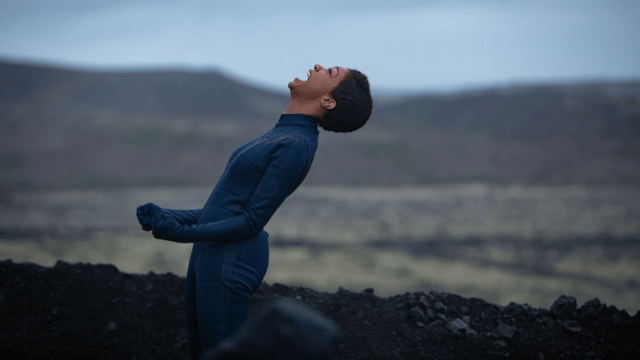When the crew of the U.S.S. Discovery chose to sacrifice their livelihoods in the 23rd century by catapulting themselves into the 32nd, they did so on the promise that they would themselves be hope: hope that a future would be there for them to arrive in the first place. But as Discovery returns for season three, it reminds us of the burden carrying such a weight can have on a person.

“That Hope Is You, Part 1” is Star Trek: Discovery’s third bold relaunch of itself. Its initial debut sought to give us a look at a darker Star Trek, where the hopeful ideology of Starfleet was sharply asked to reconsider itself in a time of uncompromising war. Its second season sought to fight back on that front, re-invigorating itself with a sense of fun and adventure as, having survived that war with its ideals (mostly) intact, our heroes could look to the stars once more.
Its third premiere then is likewise enamoured with those ideals that sit at the heart of Starfleet, those who serve in it, and what they mean. But it takes a different spin, inverting their pressures not on the organisation itself, but on the individuals that make it up — because in the year 3188, which Michael Burnham makes a dazzling crash landing into, Starfleet as either she or we knew it no longer exists. With the Discovery itself in absentia for this episode, she alone is the hope it represents in a future that desperately needs it.
As Michael acclimatizes to the 32nd century — the crucible of her adrenaline-fuelled joy and despair at having successfully transcended time and space, smashing right into the realisation that everything and everyone she knew and loved is gone — the thing that keeps her going is that sense of hope. She learns of the Federation and Starfleet’s collapse in the face of an event known as “The Burn,” an Omega-Molecules-hypothesis-esque disaster where, suddenly, the Dilithium crystals that enable warp travel in starship cores violently destabilized. It caused devastation that not only killed billions but cut the myriad parts of the Federation off from each other. She must have hope in herself and the Starfleet she still believes has to exist, as she struggles to hide who she is to the people she encounters while hobbling away from her crash landing with little more than a Starfleet division badge and an emergency survival kit. She also keeps hope in her absent friends, as she desperately tries to find out why she’s arrived in the future but they have not.
These hopes sustain Michael, but they also show what happens when the burdens of hope are put on the shoulders of a single person. Her distress at being challenged time and time again as she navigates this new normal is palpable, but it’s also fascinatingly contrasted in the anchor she rapidly attaches herself to in it: Cleveland “Book” Booker, David Ajala’s new, cat-loving character that Michael literally bumps into the moment she emerges from the wormhole into 3188. A courier who operates as both trader and messenger in this post-Burn civilisation, Book wanders from pocket to pocket of society, exchanging rare goods and supplies for a sliver of still-stable Dilithium that can power his next trip across the stars.

The Book we and Michael first encounter is very much the typical “trust no one, not even yourself” sort of figure we might expect in a post-disaster scenario. He doesn’t want to help Michael after she once again bumps into his cloaked, crashed ship because he’s got things to do and places to be. We’re introduced to him as he’s mid-chase, running away from a fellow courier whose package he’s seemingly stolen because it’s a dog-eat-dog world. Even as Michael slowly encourages him to open up to her — promising to help him get his cargo delivered if he’ll help her find a way to contact Discovery — we see him trip her up and push her away because he can only afford to look after his own priorities. Because, as we also see, Book knows the danger of holding hope in your heart as Michael does, in spite of everything she’s gone through.
Over the course of “That Hope is You, Part 1,” any time we see him even begin to contemplate what Michael represents, an avatar of the Federation That Was, he pushes it aside, almost telling her and us alike “Oh no, you will not get me invested.” Eventually, he’s broken down, not just because the hope she represents is too intoxicating, but because he can see that if she doesn’t share her burden with someone, literally anyone, it’s going to tear her apart in this world she has to adapt to. It’s only after this do we learn that the facade Book projects as a distant, uncaring drifter is a front — his true goal as a courier is to ferry endangered species to safe havens. He couldn’t share that idealism with Michael, with us, at first, without trust that her own hopes and ideals weren’t likewise a front.

Book and Michael’s shared journeys of allowing someone else into their burdens is what propels Discovery’s promising premiere above all — a powerful reminder that while hope itself is a potent thing, its true power lies in sharing it with others instead of taking the trials and tribulations it brings solely on yourself. It’s only after sharing the load of their separate responsibilities that they manage to move forward; by putting their faith in one another instead of bearing it on their own shoulders, Book and Michael find a still-functioning (albeit barely) Federation outpost staffed by a solitary, waiting Federation civilian.
Like them, Aditya Sahil (played by Adil Hussain) has sustained himself on hope, preparing himself every day, sitting at his desk, waiting for a Federation official to come. Sahil’s enduring belief that there are others out there like him in similar stations — good citizens hoping what’s left of the Federation is still out there, waiting to reunite with its shattered parts — is a powerful thing, one that galvanizes Michael even as she learns he cannot find any trace of the Discovery in the 32nd century. It’s a hope that she chooses to emulate, inviting him to join her and Book as an official communications officer that can keep tracking in the hope that one day, the Discovery will arrive.

Three seasons in, and able to cast aside the indulgent shackles it had regularly leaned upon in its status as a predecessor to the original series, Star Trek: Discovery has truly found itself in “That Hope is You, Part 1”. Its ideals are still there, and still thoroughly Trek — to cast a light in the darkest of times — but it’s also setting up a timely and beautiful addendum to those ideals: they cannot be shouldered upon a singular person or an idea but shared collectively. Hope’s greatest power is when it is given and burdened between people, and now that Michael Burnham has found new friends to carry that hope for the future with her, she’s ready to adapt and thrive in this strange new world she finds herself in.
Now we just need the Discovery and her crew to join her.
Assorted Musings
- In Star Trek: Voyager’s “Omega Directive,” the destabilized Omega Molecule irreparably damaged subspace, rendering warp travel impossible. Here, the volatile Dilithium of the Burn just turns it into a very scarce and unreliable resource — while also destroying much of the fleet in the process, making ships themselves as scarce. While the Burn is perhaps not quite as catastrophic as the Omega Molecule, the idea of a Star Trek scenario where much of the united galaxy as we know it is divided from each other and unable to make contact is a fascinating one. It’ll be interesting to see how Discovery mines this, especially as, presumably, there’s going to be a way to stabilise or perhaps acquire more Dilithium that could solve the shattered Federation’s divisions in a way there wouldn’t be in an Omega situation.
- I’m very interested to see if we learn more about Book’s weird, almost druidic connection to natural life with whatever those glowing lights in under his skin are. Biological evolution? Technological implant? Genetic enhancement?
- Likewise, there are some very cool little technological leaps in this episode that make it still feel Trek, but also like there has been an advancement of time and technological iteration. The U.I. on Book’s video screen is very cool, as is the weird haptic interface of his console — and then there are those new, seemingly universal Phaser designs used by the security at the trading outpost, a one-size-fits-all-species blaster.
- Maybe the coolest idea of all though? Instant transporting! It’s such a small thing — Trek’s had the concept of beaming people about forever. But the idea of personalised, instant transporter tech suddenly blows so many preconceptions about it out of the water. It being used in this episode to aid what is basically a very fancy chase sequence is both incredibly rad and yet also scratching the surface of what we can likely expect out of it.
- Sure, the Discovery’s not here yet, but aren’t we glad that the ship still has an alternate way of FTL travel without relying on warp in this future where warp travel is very difficult? It’s almost like they had this planned.
- Much love to our queen, Grudge the cat, who will not be body shamed.
